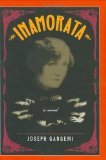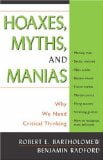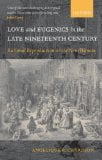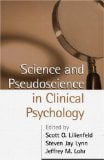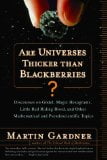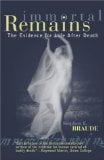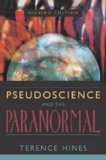 Pseudoscience and the Paranormal: Science and the Paranormal
Pseudoscience and the Paranormal: Science and the Paranormal
by Terence Hines
Prometheus Books, $21.00, ISBN 1573929794
Is there no limit to the number of strange things people believe? This updated edition of Terence Hines’ 1988 book offers an intriguing and sometimes dispiriting introduction to the strange world of pseudoscience.
Hines covers a wide range of topics including so-called psychics, life after death, psychology and parapsychology, astrology, UFOs, faith healing, alternative medicine and other fads of the past two centuries. All the usual suspects are here – the Bermuda Triangle, the Turin Shroud, the Roswell ‘aliens’ and many more. Hines gives an admirably concise summary of each, and sums up the main arguments against them.
The inevitable drawback is that there is insufficient space for a detailed discussion of each subject, but Hines gives a useful and wide-ranging bibliography which will help readers explore any or all of these topics further.
The section on faith healing is particularly fascinating, exploring the sad truth behind so-called ‘cures’. Hines cites the case of one cancer patient who suffered severe spinal injuries as a direct result of her ‘miracle cure’. She was one of many who died despite their supposed ‘cures’.
Some of Hines’ topics are more controversial. He casts doubts on many aspects of Freudian psychology and on some environmental health scares. Perhaps a third edition could include a better index. For example, given that the first illustration in the book is one of the Cottingley fairy photographs, it’s frustrating to find that the index has no entry for “Cottingley Fairies”. (The case is indexed under “Doyle” instead.) Some of the illustrations are very poorly reproduced. But these are minor quibbles with a useful and interesting book, which serves as a valuable examination of a wide range of hoaxes, frauds and popular delusions.

